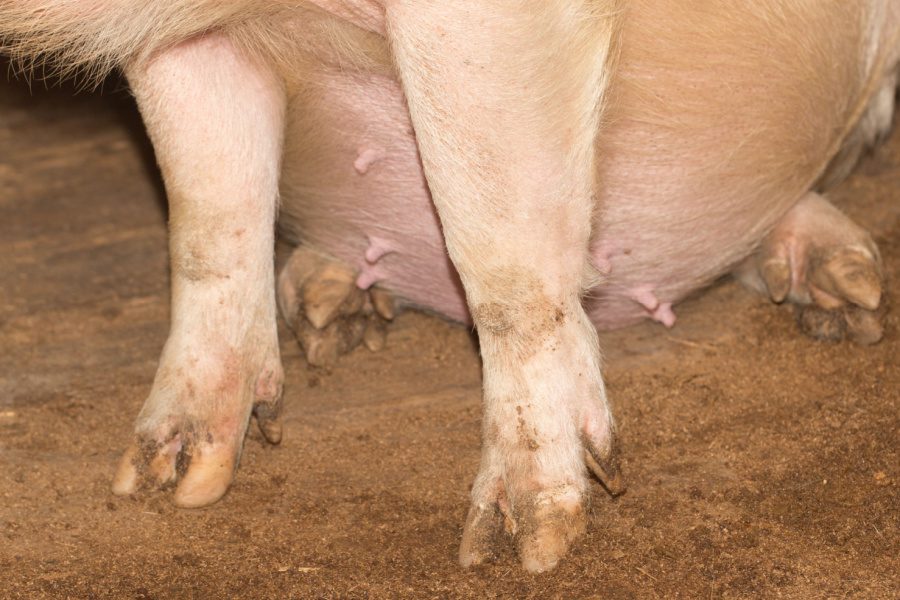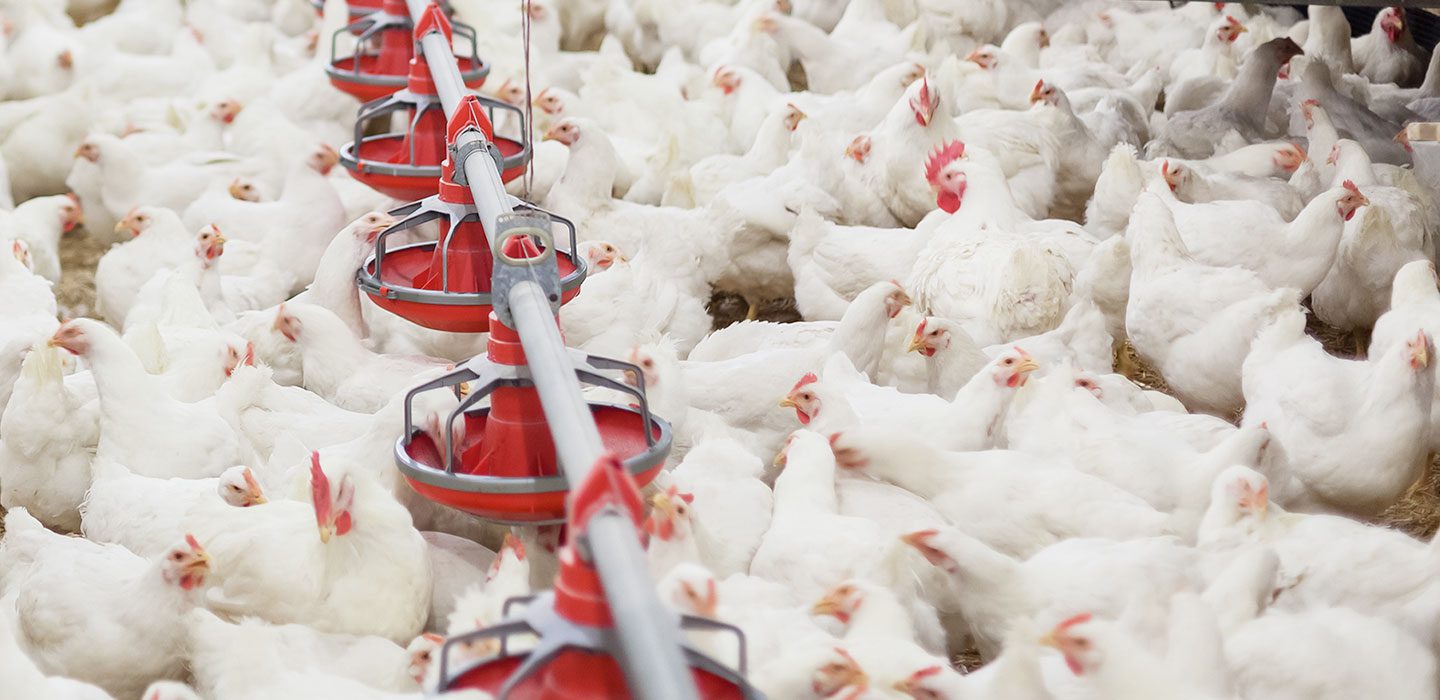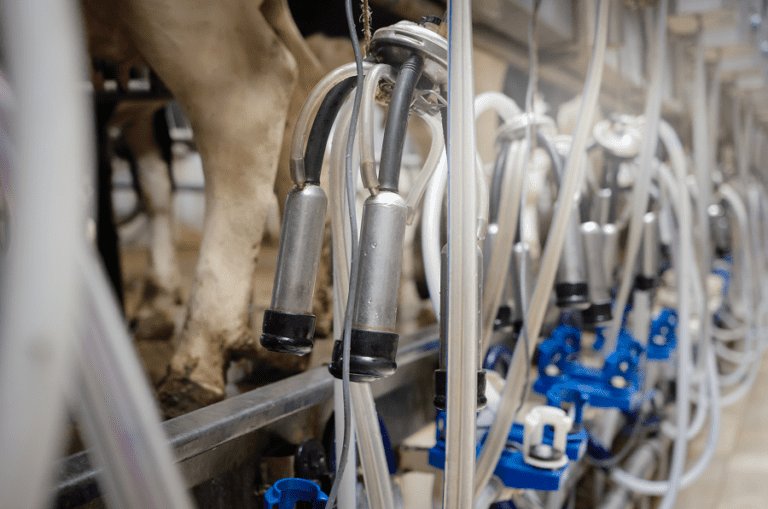Promoting Locomotion Health Through Intelligent Nutrition

The financial losses attributed to locomotion issues are significant in breeding sows. After reproduction issues, lameness is the second cause of early culling for sows. According to research1, the incidence of culling due to lameness in sows’ herds is between 6 and 40%.
There are many causes of lameness in swine: a primary cause is osteochondrosis (OCD) and, by extension, degenerative joint disease, which particularly affects young animals. This pathology is the result of a disruption in the cartilage growth plate. Bones may be affected secondarily. Many factors have been identified to explain the development of OCD in pigs, including genetics, housing, feed composition, growth rate and mechanical stress/traumas, etc. However, the link between lameness and OCD is not systematic, because some incidences of OCDs can be resolved naturally.
The second most common cause of lameness is foot lesions. Claw lesion severity can vary and generally has a high incidence rate (between 80 and 96% in swine herds). But again, the correlation with lameness is not systematic. Only 6% of sows with claw lesions show clinical lameness. These lesions increase with age and are more common on the hind legs, and on the lateral toe more often than on the middle toe. According to the literature, some links with lameness or abnormal gait have been described when lesions are present on the heel, the wall, and the white line, but there is no link to lesions at the sole or heel junction resulting in lameness.
Much like the cause of lameness, the consequences also vary. Sows culled due to lameness are removed from the herd at a younger age, resulting in fewer litters from that sow. We know that to amortize the cost of replacing a gilt, the sow must remain in the herd for at least three parities. Lameness can increase the risk of crushed piglets due to involuntary movements when sows are lying down. Lameness in pigs is shown to result in increased inflammation, predisposing the animal to other infections and/or reduced feed intake, which can have consequences on both production and reproduction performance. Finally, lameness causes pain which can be detrimental to the well-being and social behavior of animals. The welfare of the farmer may also be affected.
All nutrients are essential, but minerals are the building blocks of bones/skeletons. Trace elements (especially zinc, copper and manganese) play important roles in bone and skeletal formation. Zinc is essential for the formation of bone mass and collagen, an essential element for bone strength. Copper is also necessary for collagen production. Manganese aids in the development of the organic matrix of bone and cartilage. Zinc and copper also participate in the synthesis and cross-linking of keratin in the skin and hooves. Copper doesn’t get the same attention as zinc in the hooves, but the synthesis of a harder type of keratin is linked to copper, as is the formation of connective tissue.
Among the organic trace minerals sources, which the industry recognizes as being more available to animals than inorganic sources, MINTREX® Bis-Chelated Trace Minerals stands out for its molecular structure. As a bis-chelate, two molecules of the hydroxy analogue of methionine are linked by strong bonds to atoms of zinc, copper or manganese. Thanks to this unique structure, MINTREX® Trace Minerals offers resistance from digestive antagonisms and dissociation in the stomach. Research shows2 its bioavailability in the intestine is greater and the quantity of trace elements absorbed is more than that of inorganic trace minerals. In addition, the methionine it contains is entirely available to the animal.
Multiple trials have demonstrated the benefits of MINTREX® Trace Minerals in supporting structural health in turkeys, dairy cows and pigs. These improvements include reduced cull rate (due to fewer locomotion problems), reduced mortality and leg injuries, longevity expressed as the percentage of sows reaching parity three, improved mobility scores, improved blood biomarkers, increased hoof hardness and improved skeletal structure3.
1.-Anil S., Anil L., Deen J., 2009a. Effect of lameness on sow longevity. J. Am. Vet. Med. Assoc., 235, 734-738.
– McNeil B., Calderon Diaz J., Bruns C., Stock J., Millman S., Johnson A., Karriker L., Stalder K., 2018. Determining the time required to detect induced sow lameness using an embedded microcomputer-based force plate system. Am. J. Anim. Vet. Sci.,.13, 59-65.
- – Ballarini G. and G. Predieri. 2007. Metal Chelates in Nutrition. Structural Features, Functions and Analytical Methods. Progress in Nutrition 9:9-19.
– Liu Y., Y.L. Ma, J.M. Zhao, M. Vazquez-Añón, H.H. Stein. 2014. Digestibility and retention of zinc, copper, manganese, iron, calcium, and phosphorus in pigs fed diets containing inorganic or organic minerals. J. Anim. Sci. 92:3407–3415.
– Richards J.D., C.A. Atwell, C.W. Wuelling, M.E. Wehmeyer. 2007. A real time polymerase chain reaction assay for metallothionein to measure bioavailability of zinc sources for broilers. International Poultry Scientific Forum, Atlanta, Ga, US.
-Richards J.D., J.J. Dibner, P. Winkelbauer, C.A. Atwell, M.A. Quiroz, T. York, J. Zhou, R. Shirley, A.F. Giesen, C.D. Knight. 2008. Organic trace minerals for poultry enhance mineral bioavailability and can improve performance and reduce environmental impact. XXXIII World’s Poultry Conference, Brisbane, Australia.
- -Barea R., Bourdonnais A., Yague A.P., 2019. Utilisation d’oligo-éléments organiques dans l’alimentation des truies : effets sur la longévité et les performances des portées. Journées Rech. Porcine, 51, 167167-168.
-Wedekind K.J., Coverdale J.A., Hampton T.R., Atwell C.A., Sorbet R.H., Lunnemann J., Harrell R.J., Greiner L., Keith N.K., Evans J.L., Zhao J., Knight C.D., 2015.Efficacy of an equine joint supplement, and the synergistic effect of its active ingredients (chelated trace minerals and natural eggshell membrane), as demonstrated in equine, swine, and an osteoarthritis rat model. Open Access Animal Physiology, 7, 13-27.

Intelligent Nutrition for Your Business
More science. More insight. More inspiration. More ways for you to feed the world.





